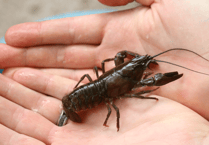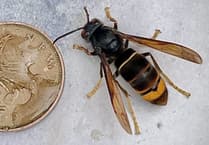A HYDRO-ELECTRIC plant that once powered Chagford's street lights may be brought back to life as a community project to help combat climate change. The tiny power station uses the force of water flowing down the River Teign and was constructed in 1891 by local millwright and machinist Mr G H Reed. Based at a disused woolen mill, a quarter of a mile upstream from Chagford Bridge, it became the smallest plant to ever supply the national grid. It was decommissioned in the 1980s — but now environmental group Chagford Action for Sustainable Energy (CASE) is hoping that its owner, South West Water, may be persuaded to sell, lease - or even give - the plant to them. The group hopes to reinstate the plant as a community project, to reduce the town's carbon-footprint. Engineer Mr Perrin is a member of CASE: 'It's the biggest single thing we could do to try to offset our energy consumption,' he said. Although small, the hydroelectric plant can produce a steady 20 watts of electricity a day - enough to power 40 houses. This power would be sold to the national grid. Because renewable energy now enjoys a premium price, it is hoped that the project could generate up to £7,000 a year to invest in other renewable energy initiatives around the town. Chairman of CASE Mr Newman Perran said: 'Once a power station like this is running, only simple maintenance is required. It's quite within the capability of unskilled people.' The project might face formidable set-up costs, however, with some estimates running as high as £100,000 - including a possible £25,000 charge from the National Rivers Authority to abstract water. CASE remains optimistic though. Mr Newman hopes that a license might not be required, since the leat feeding the station has never run dry, and he hopes: 'There are probably some every good grants that you can get for community-owned projects.' Mr Newman first contacted South West Water with a proposal to restore the power station three years ago, but at that time was told that the University of Plymouth was using the site to experiment with a new type of water turbine. Now that the university has pulled out of that project, CASE is asking SWW to reconsider its proposal. Meanwhile, plans are also underway to reinstate the hydro-electric generator at Castle Drogo. That was built in 1922 and ran until 1994, when it had to be closed because of new European legislation prohibiting DC power generation. It is hoped that the old buildings and pipes still visible down the river from Fingle Bridge will be able to be reused, in combination with a modern turbine, to power the castle. Consultants are still thinking around the problems of running modern cables down the 700 foot drop from the castle to the river - but it is hoped that the generator may be up and running in the next few years. The National Trust also has plans to possibly install a small generator in the mill race at Finch Foundry to power that site, as part of an overall strategy to reduce its carbon footprint on Dartmoor. South West Water spokesperson Chris Mills said that the company is currently considering plans of its own to reinstate the electricity plant, but is always willing to look at other possibilities. In a statement, the company said: 'South West Water is examining bringing the hydro scheme on the Teign near Chagford back into commission. A feasibility study will be done in this financial year and depending on the results of that, we may start recommissioning work next year.'



